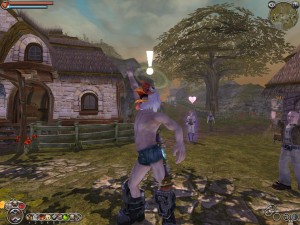PSVR Will Cost $500
When one initially heard the news that the PSVR peripheral would cost a princely $399, it seemed extraordinarily brazen given that $399 was the price at which the PS4 console itself went on sale for. Of course that view was formed before reading the fine print on that particular offer – as the PSVR headset will not actually work without the PS Camera, and most games will also require the use of the PS Move controller. Customers who do not already own these required peripherals will be able to acquire them in a bundle containing the PSVR headset, a PS Camera, two PS Move controllers, and a copy of Playstation VR Worlds. This bundle will cost $500 – the same price that the Xbox One infamously launched at!
A $500 price point was enough to assure that the Xbox One would only sell half the number of units as the PS4, but somehow Sony thinks it is a winning formula for their PSVR – or perhaps they do not. They made their big announcement claiming that the thing would cost $399, which seems to have been a misinformation tactic aimed at getting stupid consumers up to a Gamestop counter only to be upsold to an actually usable SKU that runs $100 USD more expensive. Obviously it is easier to make that sale once consumers are already in a store and mentally committed to walking out of it with a PSVR.
It is telling that Sony chose to lead their announcement with news of the $399 SKU, yet when pre-orders opened it was for the $500 bundle. In fact Niche Gamer has been reporting that the $399 SKU will not be available for pre-order. The $399 core SKU is nothing more than an afterthought, which only exists to help out with marketing. Sony’s strategy in this has been shady as all hell, and one heartily wishes this product to fail. Once pre-orders opened, stores began to sell out of their PSVR allocations pretty quickly – but it is entirely possible, nay likely, that all this stock is being bought up be scalpers with a view to turning a profit. If this is the case then one hopes that their stake in this enterprise fares just as poorly as Sony’s VR plans on the whole.
I Am Setsuna Has Been Given a Q2 Summer Release Date
The news we have been waiting for is finally here! The release of I Am Setsuna [formerly Project Setsuna] has been confirmed for a second quarter Summer release in the West. The second quarter is comprised of the months April, May, and June, while the American Summer spans June, July, and August – so that pretty much pins down I Am Setsuna‘s release for some time in June [If all goes well]. There is also some good news here for PC gamers given that the game is set to launch on the PC alongside the PS4. There is some bad news for anyone who planned to play the game on Vita however, with that version being dropped entirely from Western release plans.
According to the game’s director, Atsushi Hashimoto, if there is enough demand in the West for a Vita version then Square Enix might reconsider their release plans:
“Of course, there is a large Vita market in Japan. If there is a swell of demand in North America [for the Vita version], though, we will consider it.”
One would caution readers against getting their hopes up however, as this seems to be the kind of non-committal answer that companies give to fob off fans without invoking their rage by giving them a hard ‘no’. All this being said, perhaps it is for the best. The performance of the Vita version is held to be notorious bad by anyone who played its Japanese release, so it is understandable that Square Enix would not want to bring the game over to the West’s tiny Vita market, as doing so was only likely to cause them problems without contributing significantly to the game’s fortunes. One has long felt that if a company cannot release a polished game, then it is better to release no game at all – though that likely provides cold comfort to anyone who planned to pick up the Vita version out of necessity.
GDC 2016: Capcom Localisation Team Openly Mocks the Nintendo Treehouse Method
This week has seen 2016’s Game Developers Conference come and go, along with all of the assorted nonsense that goes with it: industry hangers-on got to feel self-important, NeoGaf collapsed to their fainting couches after Microsoft hired sexy dancers, and pretty much everyone pretended that VR is going to be the biggest thing ever [PROTIP: it is not]. Among all of this hullabaloo based Capcom localisation director, Andrew Alfonso, was dropping truthbombs and lobbing red pills at the show’s attendees, using this soapbox to call out Nintendo Treehouse in a massive way. Alfonso served as localisation director for Monster Hunter 4 Ultimate, and was present at GDC to give a talk on the localisation process required to bring that game over to the West. Alfonso quickly began to gain online attention however when images began to circulate on social media of one of his presentation slides, which stated:
“Don’t Drive To Meme Country.”
He then further elaborated on this integral component of good localisation:
“I started thinking that I don’t want people picking up my games on release saying, ‘I like these in-style meme references,’ and then another player picking up the games four years later and thinking, ‘They referenced 300 — that sucks!”
This of course comes hot on the heels of Xseed’s announcement last week that they would not be arbitrarily cutting content from their release of The Legend of Heroes: Trails in the Sky the 3rd – and both of these stories have occurred in the recent wake of several high profile botched localisation attempts by Nintendo Treehouse. Nintendo Treehouse not only boarded the retard train to Meme Country, they also took up residence there and became naturalised locals. It is for this reason that the dialogue in Fire Emblem Fates will not stand the test of time, whereas the text found in Monster Hunter 4 Ultimate will remain perfectly serviceable into perpetuity – because it uses language that is timeless. Destroying a game’s localisation with tons of internet meme references obviously makes Nintendo Treehouse employees feel like they are clever and super edgy, but all it really demonstrates is their disdain for the medium and Japanese culture on the whole.
Anime Spotlight: Yurikuma Arashi (2015)
One initially did not get around to watching Yurikuma Arashi during its 2015 run on account of not knowing what to make of its rather unique premise. Some years before the start of the series the planet Kumaria has exploded, causing the world’s bear population to become violent towards humans. The humans then build ‘The Wall of Severance’ to protect them against the bears, yet some are still able to make it through, causing the population to live in fear of bear attacks. Kureha Tsubaki is a second year student at Arashigaoka Academy with a fierce hatred for bears, on account of the fact that her mother was killed by one – but little does she know that two bears have infiltrated her local school grounds and they have Kureha in their sights.
On the face of it humanity VS adorably depicted bloodthirsty bears is humourously appealing in concept, but one never bothered to look further into the series at the time on account of suspicion that this joke would wear thin – that was a mistake, as the synopsis BEAR-ly scratches the surface of the most delightfully weird and surreal anime of 2015. A show can tell you a lot by its name alone. Both the events and name of Yurikuma Arashi are based on Kuma Arashi, which was the novelisation of Japan’s worst known bear attack incident. Yurikuma Arashi also directly translates into ‘Lesbian Bear Storm’, which serves as a fitting description of the show.
The two bears that infiltrated the Arashigaoka Academy school-grounds [Ginko and Lulu] have disguised themselves as human, and while they initially wanted to devour Kureha, Ginko eventually decides to give her a ‘promise kiss’ instead. The bear’s interest in the girl has not gone unnoticed however, and at various points they are called upon to give account at the ‘Yuri Trials’, which are presided over by the prosecution [Life Cool], the defense [Life Beauty], and the judge [Life Sexy]. Once the bears have given answer to Life Sexy’s satisfaction he then hands down his verdict with the solemn declaration: “Because it is sexy. Shaba-da-doo.” – at which point the bears are allowed to eat honey from Kureha’s flower. There is more to the premise than that, but it is honestly a little tricky to put into human words.
Suffice it to say that if copious amounts of thinly veiled lesbian bear innuendo are your thing, then Yurikuma Arashi makes for a solid weekend’s entertainment. Hell, the show is worth watching up to the fourth episode just to see this seven second masterpiece within its proper context. Obviously, being a 2015 series, all twelve episodes are already currently available [both subbed and dubbed] over at Funimation. Yurikuma Arashi is an awful lot of fun.



